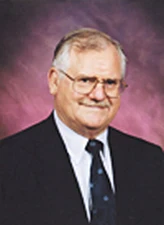Neil D. Opdyke

The 2008 Petrus Peregrinus Medal is awarded to Neil D. Opdyke for pioneering work in magnetic stratigraphy of marine and continental sediments and its contribution to our understanding of the history of the magnetic field and its geological applications.
Neil Opdyke’s contributions to science over fifty years are legion and widely known. His early groundbreaking work in the 1950’s was on paleoclimate and continental drift, with Keith Runcorn. This was followed by productive post-doctoral positions with the leaders in the field (Irving in Australia and subsequently with McElhinny, Gough and others in Africa ). Having obtained a global perspective, he returned to the US in the mid-1960’s where he began his work on the documentation of magnetic reversals in deep-sea sediments. He found a sequence of polarity intervals similar to that deduced from the age distribution of polarity in disparate lavas, and thereby completely dispelled the notion of self-reversal in rocks. This work helped clinch the Vine-Matthews hypothesis as the governing paradigm for marine magnetic anomalies. It was a striking and classic interaction between prediction and observational confirmation, along the “Road to Jaramillo”.
With unfailing intuition and good scientific judgement, Neil immediately grasped the importance of magnetostratigraphy as a tool to address outstanding problems. In 1969, Opdyke & Henry used marine core data for a convincing test of the GAD hypothesis that is central to the use of paleomagnetism in continental reconstruction. Opdyke’s work with Shackleton in 1973 marked the beginning of the integration of oxygen isotope stratigraphy and magnetostratigraphy that has led to current methods of tuning timescales. Neil pioneered magnetic stratigraphy in terrestrial (non-marine) sediments and produced some of the most impressive records, notably from Pakistan and southwestern USA. These studies led to a vastly improved time frame for vertebrate evolution and allowed the documentation of mammal migration.
Since his move from Lamont to the University of Florida in 1981, Neil has constructed the first polarity timescale for the Carboniferous and Early Permian using magnetostratigraphic data from Colorado, Pennsylvania, NE Canada and Australia. He has been involved in paleomagnetic studies in China that refined our knowledge of the paleogeography and tectonic history of the vast Asian landmass. Neil is presently engrossed in studies of young (< 5 Ma) volcanic rocks along the American Cordillera from Patagonia to Alaska, as well as from Australia. These projects are designed to determine the time-averaged structure of the geomagnetic field, central to the refinement of the GAD hypothesis and for models of the geodynamo.
Neil’s contributions to the science started by Peregrinus have left an indelible mark on the geophysical community, an impression rivalled only by his commanding enthusiasm at meetings small and large. He has a clear vision of what constitutes good science, expressing it with conviction but also with good cheer and a sense of respect. For his many contributions to geomagnetism and paleomagnetism, including service to the scientific community at large, Neil Opdyke richly deserves the recognition of the Petrus Perigrinus Medal.
